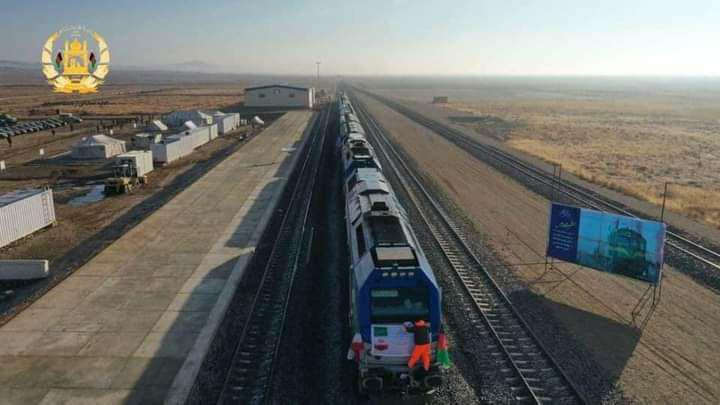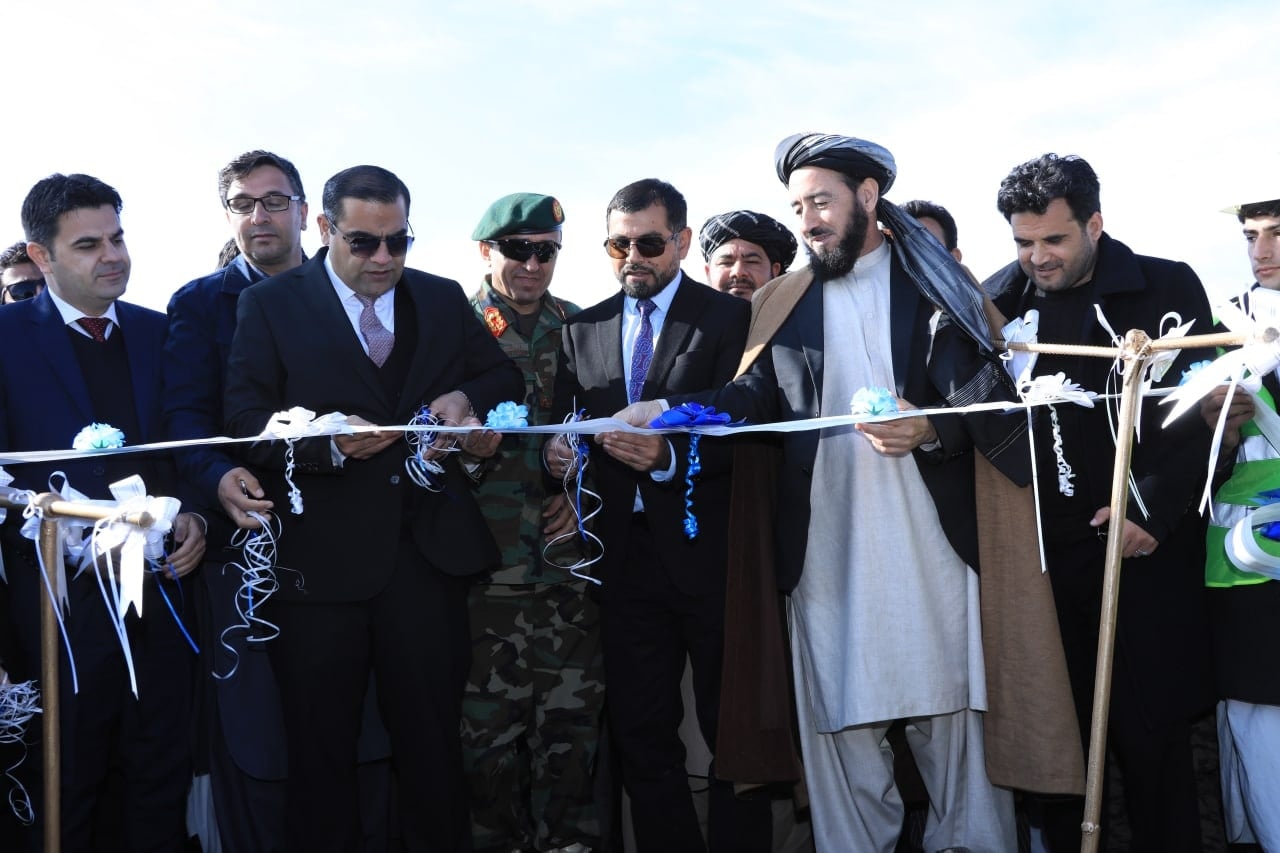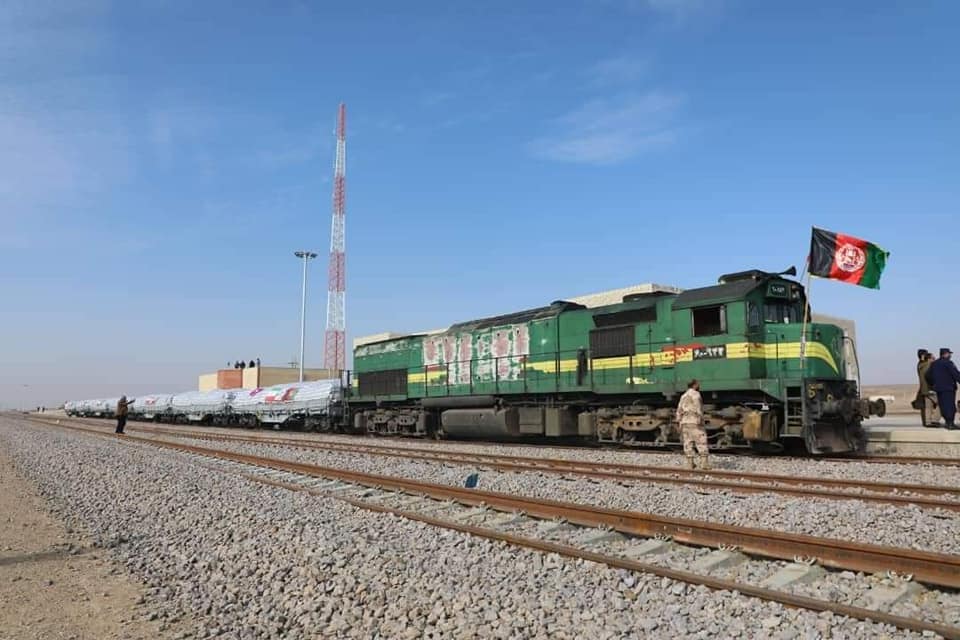
The railway from Khaf in Iran to Rozanak in Afghanistan was officially inaugurated on 10 December 2020. Afghanistan’s President Mohammad Ashraf Ghani and Iran’s President Hassan Rouhani participated in the celebrations by video conference rather than in person, because of the coronavirus pandemic.
‘I welcome the opening of this vital project as an important step towards recovery and development in both countries’, said President Ghani, adding that the railway would be the most efficient, useful and cheapest means of transport. Ghani said the project was the result of ‘tireless efforts’ by Afghanistan and Iran to improve regional connectivity and economic prosperity, and the efforts of officials, engineers, workers and other stakeholders.

He noted that Afghanistan had not been part of the ‘transport revolution’ which railways had brought much of the world. While there had been plans to develop railways under King Amanullah in the 1920s and President Daoud Khan in the 1970s, no major projects got underway until after the 2004 Berlin Conference on Afghanistan where the importance of railways for the economic future of Afghanistan and the region was stressed.
‘Our vision is for Afghanistan to regain its central position on the Silk and Lapis Lazuli roads and to invest in trade development’, said Ghani.
Iran’s President Rouhani said the opening was ‘a day of peace and blessing’ for ‘two nations from the same roots, history, culture’, which had ‘maintained their brotherhood and neighbourhood as each other’s best companions.’ He said ‘our connection has always been through our common hearts, thoughts, cultures, behaviours and efforts, and today the railway strengthens this connection.’
Khaf-Herat Railway inaugurated at order of Iran, Afghanistan Presidents

In the 36th week of the inauguration of the national and infrastructure projects throughout the country with the slogan of “Prudence and Hope for Surge in Production”, parts one, two and three of the Khaf-Herat railway were inaugurated and put into operation at order of the Presidents of Iran and Afghanistan
The construction of parts one, two and three of the Khaf-Herat railway, with a length of 140 km, has cost 1.8 trillion tomans.
Khaf-Herat railway is 225 km long and its operation is carried out in 4 sections.
Parts one and two are 78 km long in Iran and from Khaf city to the border in Khorasan Razavi province. Parts three and four of the railway are 147 km long in the Afghanistan soil from the border to Rozanak 62 km and from Rozanak to Herat 85 km, of which 140 km was put into operation today.
Development and strengthening of economic, social and cultural relations between Iran and Afghanistan by facilitating the export and import of goods and transport of passengers between the two countries, proper rail access of Afghanistan through the Islamic Republic of Iran to other international areas including the southern open waters, Caucasus, Turkey, Iraq and Europe are among the goals of this national plan.
Source: Official website of the President of the Islamic Republic of Iran, 10 December 2020
Presidents of Iran and Afghanistan at the inauguration ceremony of Khaf-Herat Railway
Linking Khaf-Herat Railway a valuable step towards further strengthening ties, cooperation between Iran and Afghanistan
The Presidents of the Islamic Republic of Iran and Afghanistan described the railway connection between the two countries as a valuable step towards further strengthening ties and cooperation between the two nations and the two governments of Iran and Afghanistan and stressed that today will be remembered in the history of the relations between the two great Iranian and Afghan nations.
Speaking on Thursday at the inauguration ceremony of the Khaf-Herat Railway, Dr Hassan Rouhani and Mr Ashraf Ghani said that the opening of this historic project will be an important step in reviving and a leap in the cooperation between the two countries.
Addressing the “Dear People of Afghanistan”, Dr Rouhani said, “Today is a day of peace and blessing for the two great nations of Afghanistan and Iran; two nations from the same roots, history, culture and from the same region throughout history, who have maintained their brotherhood and neighbourhood as each other’s best companions”.
“Our connection has always been through our common hearts, thoughts, cultures, behaviours and efforts, and today the railroad strengthens this connection,” the president said.
Stating that today is a happy and unforgettable day for the two nations of Iran and Afghanistan, Dr Rouhani said, “I wished that this ceremony could be held in person, but due to health instructions related to coronavirus, we had to hold a video conference”.
At the ceremony, the President of Afghanistan described the operation of the historic and vital Khaf-Herat railway project as the result of the tireless efforts of both countries in connecting the region and achieving future economic prosperity and said, “I wished to inaugurate this great project in person, but the limitations caused by coronavirus led us to inaugurate this vital project through video conferencing”.
Mr Ashraf Ghani stated, “Completion of this important project, despite the limitations caused by the spread of coronavirus, is a clear sign of the national will of both countries and the product of the efforts of engineers, workers and all people involved of this important project”.
He added, “The inauguration of this historic project will undoubtedly be an important step towards a leap in economic cooperation between the two countries”.
Source: Official website of the President of the Islamic Republic of Iran, 10 December 2020

In case you were wondering, the Iranian Railways Prima diesel locomotive is indeed part of the same Alstom family as the UK’s Class 67 locos. Other related types are found in Syria, Israel and Sri Lanka (Photo: AfRA)


















